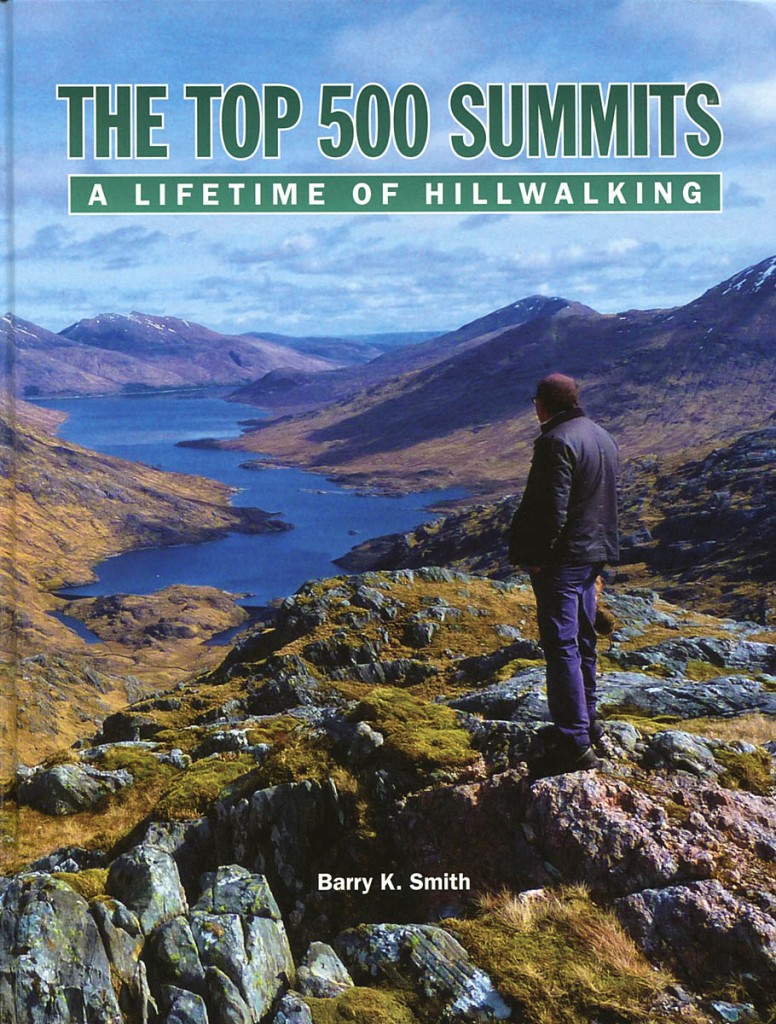The number of hill lists seems to grow every year. Here’s another.
It’s actually surprising that no-one has come up with this particular one before. It’s not quite as simple as it sounds: the featured hills and mountains have to have a drop of at least 500ft between summits, and it covers the island of Ireland as well as Great Britain.
The 500 highest summits range from the obvious big boy Ben Nevis at 4,411ft to Knockanaffrin in Ireland, the lowest at 2,477ft.
For anyone looking for a hit list of hills to tick off, this book is useful, though the author freely admits it’s not a guidebook. It’s a quirky tome that falls somewhere between a guide and a journal, recording each of Smith’s ascents in the 50 years it has taken him to climb them all. Its subtitle A Lifetime of Hillwalking aptly describes its scope.
I can’t help thinking anyone out to bag these 500 might also want to add some of the munros that fall outside the 500ft drop criterion. Surprisingly, these include Cairn Gorm; Aonach Mòr; Sgurr Fiona on An Teallach and Stob na Broige on Buachaille Etive Mòr. England’s second-highest mountain, Scafell, also misses out.
Any hill-list criteria have to be fairly arbitrary by their nature, and 500ft is a nice round, non-metric figure to choose, but munro baggers may be alarmed to see that 82 of the Scottish 3,000-footers are excluded from inclusion in this book.
A total of 488 hills over 2,500ft have been supplemented by 12 just under this figure to make up the list. 430 of the summits are in Scotland.
The book is divided into 200 separate walks, though the recommendation is to split these into two or more half-day walks.
The book is very personalised and details the author’s own ascents of each hill, often with his two brothers or their friend. The routes make no pretence to be comprehensive and note only the one taken by Smith and his family and friends during their ascent.
Each has the author’s personal view or that of his companions on aspects of the mountain. Mickle Fell in the north Pennines, for instance, is described as: ‘the most miserable spot in England where you will either drown in peat hags or by shot by the Army’.
There are snippets of information on features on the mountains, but sometimes these are sometimes infuriatingly brief and leave the reader wanting more detailed background.
The book is illustrated by colour photographs mostly taken by the author or his walking companions during their trips into the hills.
The Top 500 Summits is divided into 12 sections, covering different geographical areas, and there are full lists of the hills, arranged by height, for anyone who fancies having a crack at all or some of them, along with 10 more that just missed out, plus the munros that don’t qualify.
It’s a fairly hefty, hardback volume, not really one to slip in your rucksack and, as the author says, not intended to be a comprehensive guidebook. But it may inspire you to start ticking off these peaks as a personal quest. Munrobaggers will be a long way towards completing the list anyway.
The book would benefit from a little more background detail in some instances to enhance the enjoyment of the walks.
The Top 500 Summits by Barry K Smith
Published by Where2Walk
Price £20.00 plus postage
